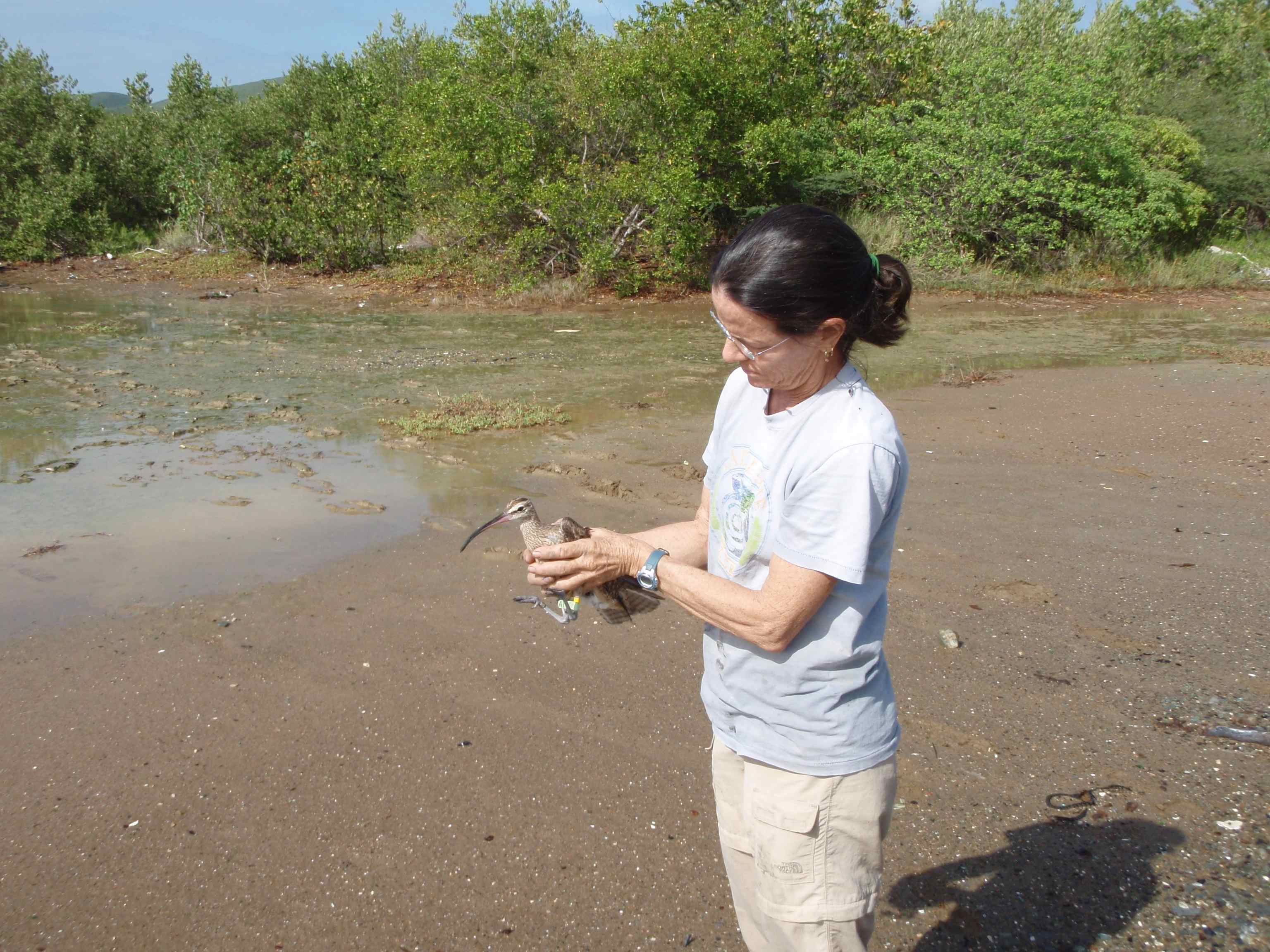We received permission from Fletcher Smith of the Center for Conservation Biology to post the following update about Hope, a Whimbrel whose migration has been tracked via satellite for the past several years. We thank Hope for her years of service in helping to understand Whimbrel migration and wish her a happy retirement. You can read our first two posts about Hope here and here. - David

Hope is released after the non-working transmitter was removed by local bird expert Lisa Yntema.
Credit: Fletcher Smith
Hope, a Whimbrel carrying a satellite transmitter, has been captured and the non-working satellite transmitter on her removed. The bird has been tracked by a team of researchers led by the Center for Conservation Biology at the College of William and Mary and Virginia Commonwealth University (CCB) through her migratory travels since she was captured on Box Tree Creek in Northampton County, Virginia on 19 May, 2009. Since that time she has traveled more than 50,000 miles (80,000 kilometers) back and forth 4 times between breeding grounds on the Mackenzie River Delta in the Northwest Territories of Canada and her wintering territory on Great Pond, St. Croix, U.S. Virgin Islands. She arrived this year at Great Pond in early September and shortly afterwards her signal was lost. It became apparent through photographs taken by local bird researchers that the antenna had fallen off of the transmitter. A CCB biologist (with assistance from local researchers) captured Hope on 20 November, 2012 and removed the transmitter. The unique alpha-numeric leg bands were left on the bird and Hope was resighted in her territory by local bird expert Lisa Yntema on 28 November.
Great Pond, Hope’s winter home for at least the last four winters, is a 50 hectare mangrove wetland located on the southeast coast of St. Croix. The area is designated as an Important Bird Area by Birdlife International and supports at least 72 bird species during some portion of their life cycle. These include locally rare breeding birds such as the Least Tern and Wilson’s Plover and many migrant shorebird species besides Whimbrels. Great Pond and the adjacent East End Marine Park are managed by the Division of Fish and Wildlife, Department of Planning and Natural Resources, U.S. Virgin Islands, who collaborated with and provided logistical support to CCB in the trapping of Hope.
Hope has taught the research community a great deal about the migratory pathways and habits of Whimbrels. Her high fidelity to breeding, wintering, and migration sites shows the importance of each stage of the life cycle in conserving Whimbrels and other shorebirds. An incident in the fall of 2011 highlights the importance of these safe stopover sites, when Hope and Machi (also a Whimbrel) were tracked during fall migration. Both flew through Tropical Storm Maria, with Hope landing in protected lands on St. Croix, and Machi landing in Guadeloupe, an island known for unregulated shorebird hunting. Hope made it through the storm safely, as did Machi, but Machi was shot and killed just minutes upon her arrival to Guadeloupe.
Hope is one of two dozen birds that have been tracked in a collaborative effort between The Center for Conservation Biology, The Nature Conservancy, US Fish and Wildlife Service, Georgia Department of Natural Resources Non-game Division, Canadian Wildlife Service, Manomet Center for Conservation Sciences, and Virginia Coastal Zone Management designed to discover migratory routes that connect breeding and winter areas and to identify migratory staging areas that are critical to the conservation of this declining species.
Fletcher Smith
Research Biologist
The Center for Conservation Biology
The College of William and Mary/Virginia Commonwealth University
Williamsburg, VA

